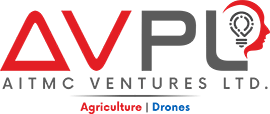
Revolutionizing Agriculture—Drones vs. Manual Spray
Precise in-application of agricultural inputs—the most important benefit associated with them—is possible with an agricultural drone. With its advanced sensors, state-of-the-art GPS technology, and high-tech software, a drone will be able to efficiently map fields, noting where chemicals or other inputs are needed in order to apply them. By doing this, not only are inputs conserved, but each crop is subjected to the right treatment for maximum returns with a reduced impact on the environment.
Manual application methods are generally less precise. It is easy for a human operator to miss uniformity over a large or irregularly shaped field and end up over-applying in some places and under-applying in others. This is besides being a waste; it may contribute to uneven growth of crops and thus higher costs for farmers.
Efficiency and Time Savings
Compared with traditional methods of application, agricultural drones have huge efficiency gains in spraying. Only a small part of the time it would take manual laborers to cover a large area of land is required by drones. In the light of this enhanced efficiency, farmers will be able to treat crops more frequently and respond promptly to changing weather conditions or pest outbreaks.
On the other hand, manual spraying is time-consuming and labor-intensive. This requires skilled workers to be on the ground operating spraying equipment by walking while spraying equipment in trolley or mounted form through a field. This intrinsically limits both the speed and frequency of the applications. Moreover, the cost of manual labor itself may already be considerable, specifically at peak spraying seasons.
Cost Considerations
While investing in drone technology might be dearer than the usual traditional spraying equipment, it shall bring quite a substantial saving in the long run. Attached to the drones is a more efficient way of using resources, by reducing input wastages and lowering labor costs over time. Other than that, timely applications might help in stemming crop losses from outbreaks of pests and diseases, hence improving profitability for farms.
The application of drones in farming is going to be interesting since, as technology evolves further, one takes a glimpse at how these flying devices consume more and more agricultural workflows in driving innovation and food security for the coming generations.
Adopting agricultural drones leaps one into modern crop-spraying practices. These advanced technologies mean farmers can increase productivity, quality of crops, and reduce environmental impact. Manual spraying methods may have held agriculture together for many generations on their own, but drones spell amazing changes toward a path of a more sustainable and proficient agricultural sector in the future.
Expansion in Agricultural Horizons through Cameras Equipped in Multi-Copters
Advanced cameras equipped on drone multi-copters are part of evolutionary farming techniques beyond spraying in modern agriculture. These drones come equipped with a set of advantages that extend the horizons of conventional techniques, improving efficiency, precision, and management of the farm as a whole.
Crop Monitoring and Assessment for Health
Equipped with multi-spectral or thermal sensors, high-resolution cameras, multi-copter drones can provide minute details on crop health and growth patterns to farmers. Quite early in the growth of crops, drones capture aerial images and data, detecting distress, disease, or any deficiency of nutrient in them. After early detection, timely actions concerning irrigation, fertilization, or control measures against pests could be taken to maximize yield and lower crop loss.
Field mapping and precision agriculture
Equipped with GPS technology and specialized software, multi-cooter drones can create detailed maps of farmland. These maps can delineate changes in soil structure, moisture, and elevation across the field. This information can then be utilized to generate the most accurate planting patterns possible, perform variable rate applications of fertilizers and pesticides to only where it is necessary, and use resources more effectively. This approach is called precision agriculture, and such methods increase crop productivity while reducing costs and the impact on the environment.
Yield Estimation and Harvest Planning
Multi-copter drones, equipped with advanced imaging technologies, can precisely estimate the production of crops before harvesting. From aerial images, crop density and other indicators of health can be made out by farmers to estimate yield and hence decide on time of harvest and logistics accordingly. Resources at their ends would then be better planned for things such as labor, equipment, and storage facilities, which will lead to the optimization of the efficiency of the whole harvest process.
Environmental Monitoring and Compliance
Beyond crop management, multicopter drones play a huge role in environmental monitoring and compliance. They can take stock of the impact farming activities have on nearby water bodies, forests, and wildlife habitats by constant monitoring of soil erosion, runoff, and chemical residues. Data of this nature enables farmers and regulators to enforce compliance with environmental laws and sets them on the path to sustainable farming.
Research and Development
The multi-copter drones are quindi served as valuable tools in agricultural research and development. The researchers use them to conduct experiments, gather data used in crop trials, study the new effect of any agricultural technique or technology that is introduced. This results in innovation and improvement of farming practices hence developing crop genetics, pest management strategies, and innovations in sustainable agriculture solutions.
Conclusion
Advanced camera technologies mounted on multi-copter drones will transform agriculture by providing the possibility for precise crop monitoring, resource management optimization, better care for the environment, and innovation in agriculture. In the near future, these drones will take the lead in helping farmers rise to the challenges of feeding a growing global population while securing sustainable farming practices for the future.

